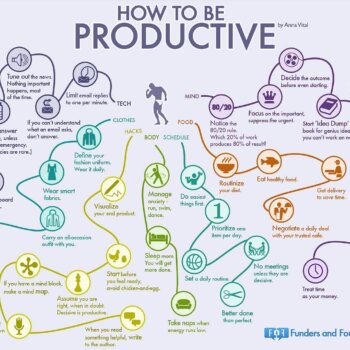In this short guide we aim to highlight some of the common areas in which conflict arises with a particular focus on early stage startups. Clearly, this is a huge topic and the space afforded to us here is by no means enough to discuss it exhaustively. Nevertheless, we hope to highlight some of the more common conflict scenarios and offer up some tips on how best to avoid them.
Key Takeaways
- Identifying conflict and addressing the root causes early on saves time, money and effort further down the line
- Understand that it is important to work on your own emotional intelligence and value the investment of time in building a constructive and conflict free environment as much as you value the time invested in other areas of the business
- Crucially, understand that conflict is often the net effect of environmental and cultural factors rather than just difficult employees – although you will, at some point deal with these as well (another topic)
- Work hard on keeping an effective board and have in place mechanisms to keep board meetings useful and on task
Intra-team conflict
Many of us are familiar with intra-team conflict whether we know it or not. Rarely does it involve a full blown ‘table flip’ anger filled episode – although sometimes this can happen – it is usually a chronic and protracted erosion of positivity and productivity that points to intra-team conflict. I would note at this stage that whilst the net-effect of the above can be absenteeism, spikes in sick leave and high levels of staff churn, these are not the scenarios to focus on – they are the ‘lag metrics’ in this instance. For the purposes of this article we will focus on the other, less obvious scenarios because the methods for addressing these ultimately feed into addressing the aforementioned ‘lag metrics’.
Scenarios:
- The most common scenario is when team behaviour creates an atmosphere that isn’t productive. This can include passive aggressive attitudes, a general detached level of interest and the impression of generally not being present in the room. Left unchecked this leads to others becoming disengaged and a cycle of decline.
- Lack of input/ideas from others during meetings makes the process of collaborating and problem solving painful.
- Another common scenario is when the process of giving someone feedback is uncomfortable or impossible and immediately puts the person receiving feedback on the defensive.
Tips:
1+2. CREATING PSYCHOLOGICAL SAFETY IN THE WORKPLACE
Often, the root cause of scenarios such as these is defensive behaviour. Much in the same way that people may retreat from (or the opposite, try and dominate) a conversation they have not prepared well enough for, defensive behaviour from a psychological point of view is something we have all seen before. Labels include, domineering, detached, guarded, avoidant, compliant, despondent. Defensive behaviour is also one of the biggest blockers to one of the most important components for organisational success – Psychological Safety – to the uninitiated here is an introduction to the concept of psychological safety from Google.
Ultimately, psychological safety in the workplace – to summarise in a somewhat ham fisted fashion – is where people feel safe taking a risk and contributing without feeling as though they are compromising themselves in someway. Mastering this will help to avoid those awkward meetings filled with tension and lack of engagement.
The good news is that Google has done a bit of work on how to avoid triggering defensive behaviour and promoting psychological safety. They even put together a handy checklistof tools and methods to deploy in order to foster a positive, safe environment for employees to engage. By no means is this a silver bullet but instead we offer it up as a reminder to early stage founders that the culture and environment you build is symbiotically linked to employee engagement. A good place to start in avoiding conflict in the team is here.
3. WORK ON GIVING FEEDBACK
Giving feedback is a form of public speaking and it is uncomfortable for many of us. Often, feedback isn’t given well and can be delivered in an overly personal, negative manner and act as a precursor to conflict. Obviously, there will be scenarios in which conflict arises from feedback given in a ‘good’ way – these things do happen – but for the purposes of this article we will focus on optimising the feedback process to avoid conflict.
It is generally a good idea to follow these golden rules,
- Recognize That Your Employees Want Feedback
- More often than not people want feedback and want to improve. It is not the content, usually, that causes conflict but the delivery of the feedback that does. Going into a meeting to give someone feedback knowing that what you have to say is valued will help you deliver it in a more effective way.
- Come Prepared With Concrete Examples
- Put together a list prior to the meeting and make sure that the person you are giving feedback to is aware of the time and effort you have put into thinking about the feedback you are giving and know that you genuinely care. It will be appreciated and it will show you are not just box ticking or worse – winging it.
- Focus On Performance Instead Of Personality
- Focus in on actions and avoid characteristics i.e. “It would be great if you could focus more time on this area” rather than “you are not good at prioritising”. It is less likely to be taken personally and trigger defensive behaviour.
- Offer Two Solutions For Every Problem
- No one likes someone who points out problems without solutions. Help inspire conversation and action by coming armed with ideas on how to improve something. Nothing is worse than giving feedback and having no idea on what that person needs to do in order to improve.
- Ask For Feedback
- Linked to the work on psychological safety above – showing humility and also fostering an environment of collective improvement where it is safe to give everyone feedback equally will help inoculate against defensive behaviour.
Board conflict
Scenarios:
- The classic scenario is when board members are unclear on their role and what is expected of them. This often leads to imbalances within the board. Some may feel powerless and others may feel as though they have disproportionate control. This can especially be the case if board members are new to board level roles and have previously been in a hands-on operational role. The tendency in these situations can be for heavy handed and overpowering board members that frustrate others. In this scenario, it inevitably results in discord and the fallout can be quite painful and time consuming.
- Another scenario is when there are fundamental conflicts of personality making it difficult for personal conflicts to be put aside in the interests of the business.
- Finally, another scenario that deserves attention is when board members act inappropriately and ‘bully’ the CEO. Bully tactics can include blocking CEO/Founder pay rises for spurious reasons, refusing to cooperate, undermining authority and setting unreasonable timelines and goals.
Tips:
1. CLEARLY DEFINE THE ROLE OF THE BOARD MEMBER.
One of the easiest ways to reduce the potential for conflict is to state clearly to new and potential board members what you expect from them. At the very least develop a role description. It doesn’t have to be a ten page document but noting down your thoughts on paper and communicating them clearly will help define and demarcate roles and responsibilities from the outset.
Also, it is important to note here that many execs simply forget to treat board members as new hires to the business. It is not difficult to see why – they are more detached from the day to day. However, it is crucial that the culture, values, working styles and the vision of the business is clearly communicated to board members. It is these fundamental building blocks that help board members see the company and their role within it through a constructive and complementary lens.
2/3. HIRE AN EXPERIENCED CHAIRMAN & DON’T BE AFRAID OF PUTTING IN PLACE PROCESS AND STRUCTURE
Chairman:
We have covered this issue before in another TPF article. An experienced Chairman is a hugely valuable ally and acts as the lynchpin for effective and painless board meetings. They can help mediate and keep a board on task, focussed on strategy and avoiding turf wars. An effective Chairman will act as a coach to the Founder/CEO and help them navigate board meetings and conflicts. Moreover, it is the Chairman’s responsibility to make sure that uncollaborative, harassing and/or bullying behaviour is not tolerated.
Process and structure:
Before each board meeting create an agenda and circulate it. More importantly, take time to evaluate the agenda items before they are presented. Identify areas of potential conflict and don’t be afraid to seek an individual’s counsel in advance. This will give you an opportunity to identify possible solutions to the areas of potential conflict. It is also advisable to undertake an annual board assessment to allow board members to surface how they feel about their role and the rest of the board members. External providers can help with this if a more involved 360 would be useful. Finally, don’t be afraid of bringing in external help. If you have identified a troublesome board then external coaches and mediators can be useful.
Final remarks:
Ultimately, conflict will occur in your startup. Moreover, the scenarios listed above for when it does are far from exhaustive. The best way to tackle conflict is to be proactive rather than reactive. Creating a culture of open debate, psychological safety or even radical candour can help deflate bubbling tensions and allow managers to quickly and nimbly identify and tackle areas of conflict – it sets you up for success. Also, it is key to understand that conflict can and will occur in the highest echelons of your organisation and in this scenario you are not powerless to prepare for, identify and address areas of conflict.
In the coming months we will be expanding on the topic of conflict and, through a more granular lens, start to examine other scenarios along with some tips on avoidance manoeuvres and what to do when they arise.
About the Author
This article was produced by the Path Forward. The Path Forward was developed by Forward Partners, a VC platform that invests in the best ideas and brilliant people. Forward Partners devised The Path Forward to help their founders validate their ideas, build a product, achieve traction, hire a team and raise follow on funding all in the space of 12 months. The Path Forward is a fantastic startup framework for you to utilise as an early stage founder or operator. The framework clearly defines startup creation as being comprised of three steps. The first step of this framework involves understanding customer’s needs.Nic is Head of PR & communications at Forward Partners. Over the course of a 10 year career in communications, he has working with global brands including Orange, Warner Bros., BBC, and amazon.co.uk.




























